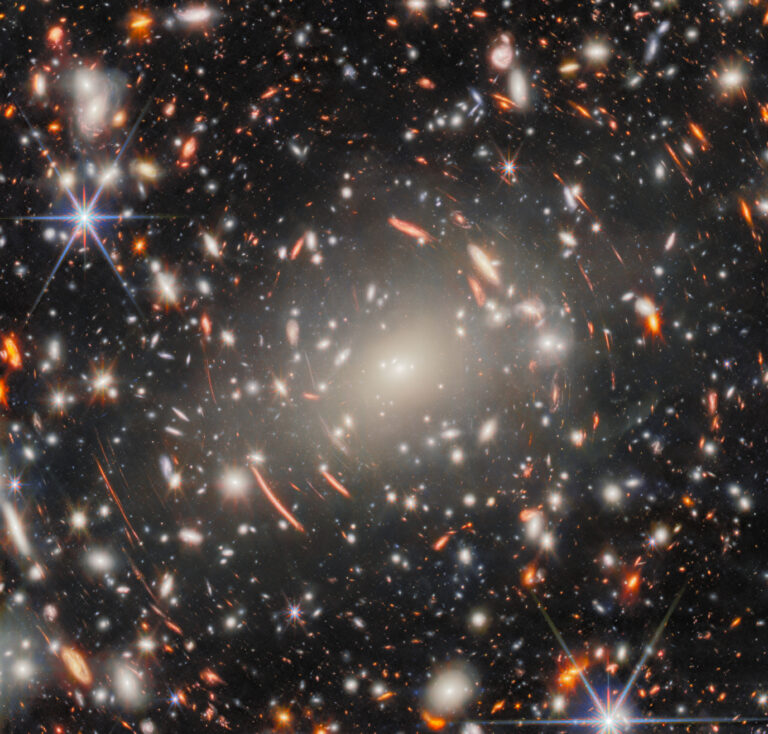It is true that most big galaxies, both those with spiral shapes and those with other shapes, have a monster black hole lurking at their centers. Astronomers call these enigmatic objects supermassive black holes. And now, to prove the existence of such objects, we even have a picture from the heart of M87, a giant elliptical galaxy about 55 million light-years away in the constellation Virgo. Closer to home, astronomers like Andrea Ghez, a professor at UCLA, have been carefully tracking for 15 years the high-speed motions of a handful of hot young stars orbiting a black hole at the Milky Way’s center. Our central supermassive black hole, 26,000 light-years away, is called Sagittarius A* (pronounced “A star”). As strong as its gravity is on the stars at the galactic center, this monster exerts an insignificant force on the Milky Way at large and has nothing to do with our galaxy’s spiral shape. To understand why, we need to compare these supermassive black holes to their galaxy hosts.
Scientists categorize supermassive black holes by their mass (how much stuff they contain) compared to our Sun. For example, astronomers estimate the M87 black hole’s mass is a whopping 6.5 billion Suns, while the Milky Way’s is a bit more modest, weighing in at about 4 million times the mass of the Sun. With so much mass, monster black holes like Sagittarius A* exert huge gravitational forces on anything unlucky enough to get too close. But our galaxy is vast in size and contains the mass of 100 billion to 400 billion Suns.
According to Albert Einstein’s general theory of relativity, gravity is the warping of space-time by mass. Sagittarius A* is so massive and so dense that it bends the space-time in a tiny region at the center of the Milky Way into a pointlike hole — a singularity. Despite this tremendous space-time curvature, our central black hole is the dominant source of gravity only within the inner few light-years. Outside this region, the net force from the galaxy’s stars easily overpowers its monster black hole.
Following Isaac Newton’s law of gravity, the strength of gravitational attraction becomes weaker by the square of the distance between two objects. For example, if Earth was twice as far from the Sun, the gravitational force would be four times less, causing Earth to orbit at a slower speed. Following this math, the gravity that Sagittarius A* exerts on our Sun is 1 billion times weaker than its influence on the stars at the galactic center. Instead, the gravity from the few hundred billion stars interior to the Sun’s orbit dominate the motion of stars near the Sun. And dominating the Milky Way’s shape is the large, spherical dark matter halo surrounding and cradling the galaxy, with its gravitational influence equivalent to the mass of more than a trillion Suns.
Daniel H. McIntosh
Norman Royall Distinguished Professor,
Department of Physics and Astronomy,
University of Missouri-Kansas City










